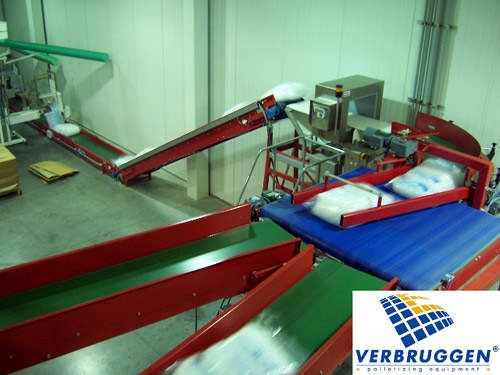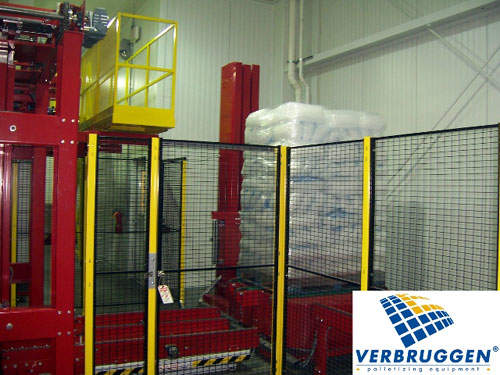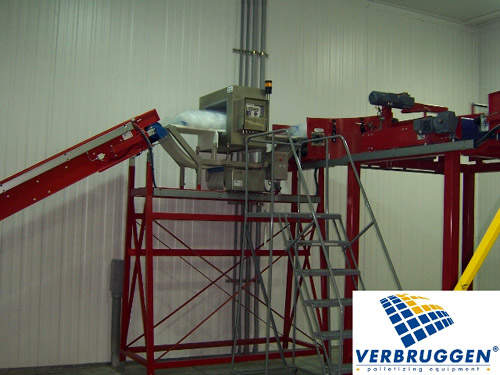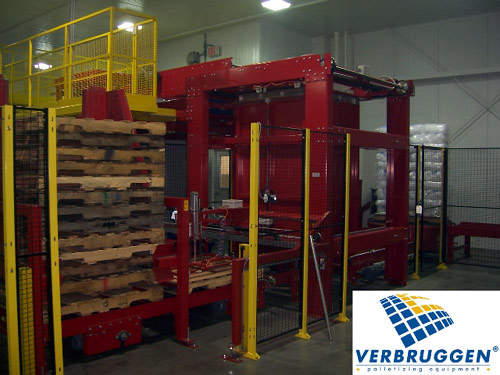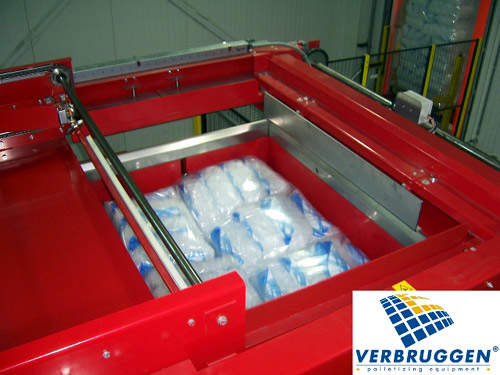Kwik Trip is a company based around petrol retailing and convenience stores with annual sales of around $3bn. The company has a chain of 338 convenience stores across Wisconsin, Minnesota and Iowa and currently opens around 20 new outlets per year. The privately held company has developed a philosophy of owning and supplying its own logistics chains and to that end has a multipurpose facility based in La Crosse to produce a range of items for its stores including bakery products, ice cream, yoghurt, bottled milk, isotonic beverages and bottled water. One of these items is ice.
The ice plant packages around 200 tons of ice every week and the transport packaging of the ice is extremely important in getting it to the 338 stores used by 4 million customers a week. Two factors are very important in packing ice – speed, and the ability to stack the ice into tightly packed stacks for transportation.
Custom ice palletisation
For its custom palletiser system Kwik Trip decided not to use robotic systems because there would have been a problem with the speed of the system. Instead the system uses two staff to bag and palletise the ice across an eight-hour shift. The palletising system, which was designed, supplied and installed by the Dutch company Verbruggen Emmeloord BV, stacks the bagged ice then wraps it and positions the pallets onto a sled for storage prior to transport. The bags arrive at the palletiser on a conveyor in-feed which positions the bags in a precise arrangement in the accumulation area at the top. The accumulation area has a special floor which consists of metal plates that can buckle and move down once a layer has been completed. Underneath the accumulation area is a four-walled stacking container that keeps the pallet load together and precise preventing any hangover of the bags.
Following the positioning of each layer, the palletiser compacts the bags down to give a flatter surface for the next layer, the idea being to provide a compact pallet load of ice with no spaces in between that will be easier to transport and will remain solid for longer. When the pallet of ice bags has reached its required height the palletiser can then transport the stack to a stretch wrapping machine (also integrated with the system) and this winds stretch wrapping film around the rotating tower of ice bags preventing any movement during transport. Finally the wrapped stack is moved by conveyor to a sled in the shipping area. This is the first time Verbruggen Emmeloord BV have installed this type of palletising system in the US (has formed a prototype for future applications of the same kind).
Ice production
Ice production needs to be rapid in the Kwik Trip plant to keep up with the speed of the packaging system. The ice production machines work 24 hours a day. The plant has a Hellenbrand Inc reverse osmosis filtration system to produce pure water and two ice builders that use an ammonia-based cooling system from Frick (a subsidiary of Johnson Controls Co) to freeze the filtered water to form solid pure ice. The ice produced falls onto a 5ft wide conveyor called a dewatering belt that allows the new ice to drain away any melt water. The ice is then passed through the drying room where powerful fans blow away any further melt water and dry the ice as much as possible.
The finished ice is then stored in a special container to keep the ice pieces from freezing together (supplied by Keith Manufacturing Co). The Keith system uses a reciprocating floor slats system to feed ice to the vertical comb system that will provide an uninterrupted flow of ice. Any congealed ice is broken up and then cascades to downstream augers to be packed in bags. The bagged ice is then checked using a Fortress Phantom Metal detector from Fortress Technology to ensure that there is no contamination.

